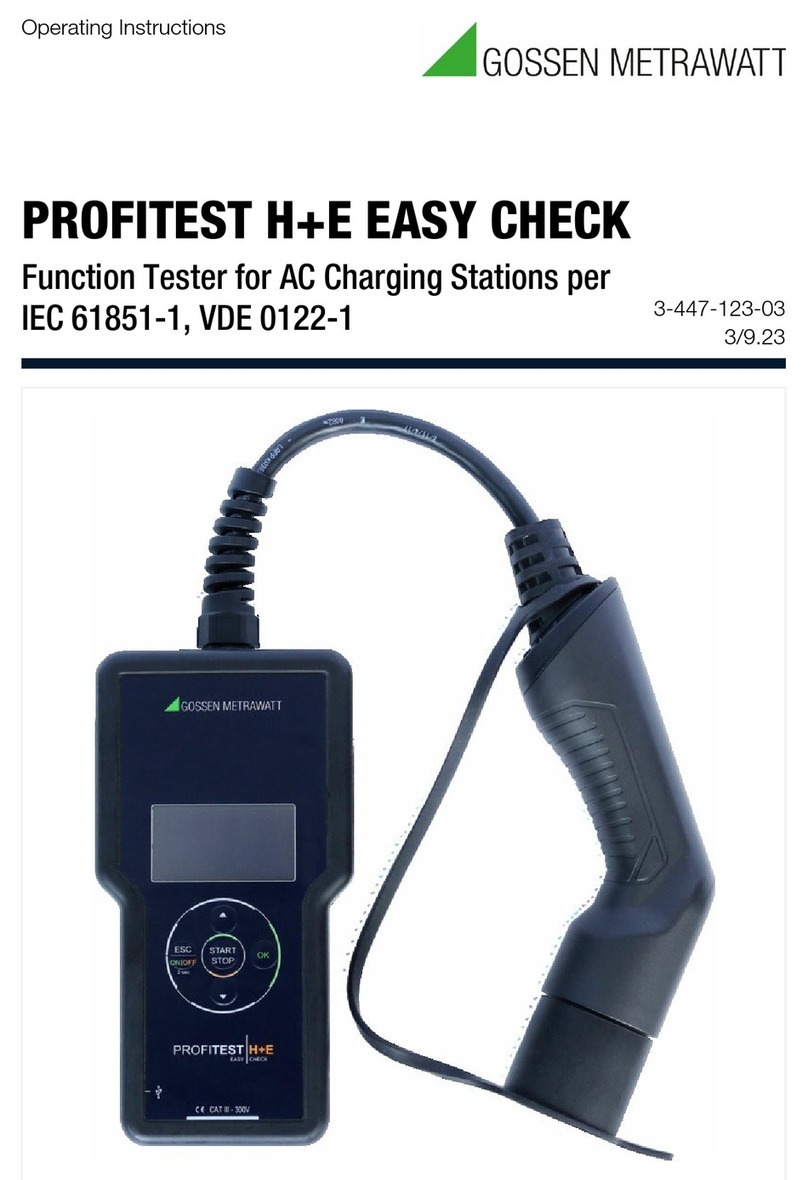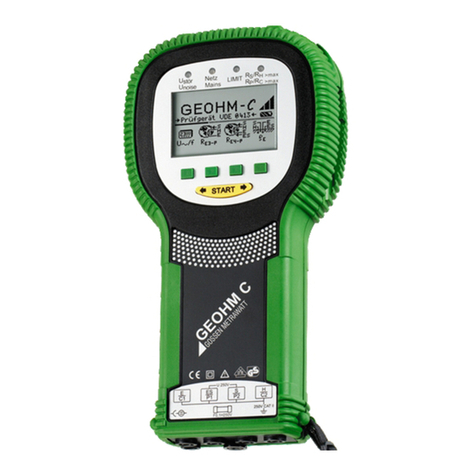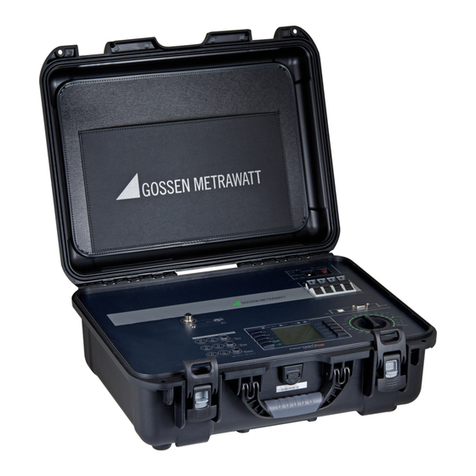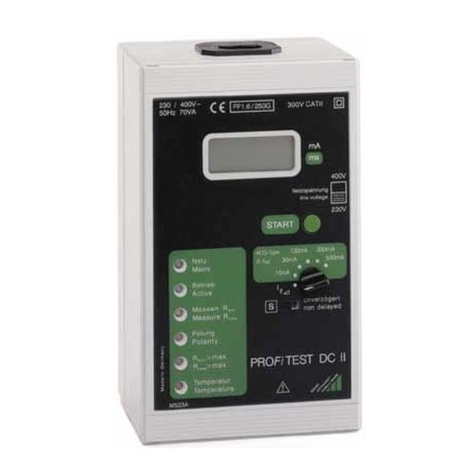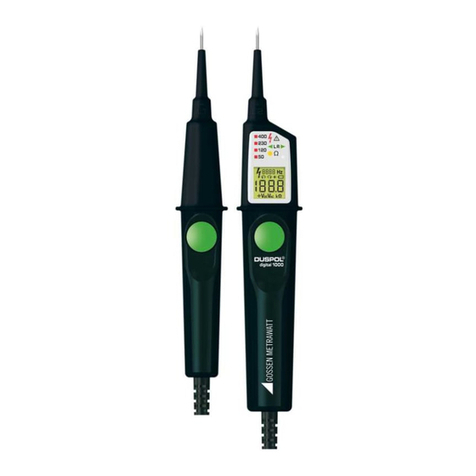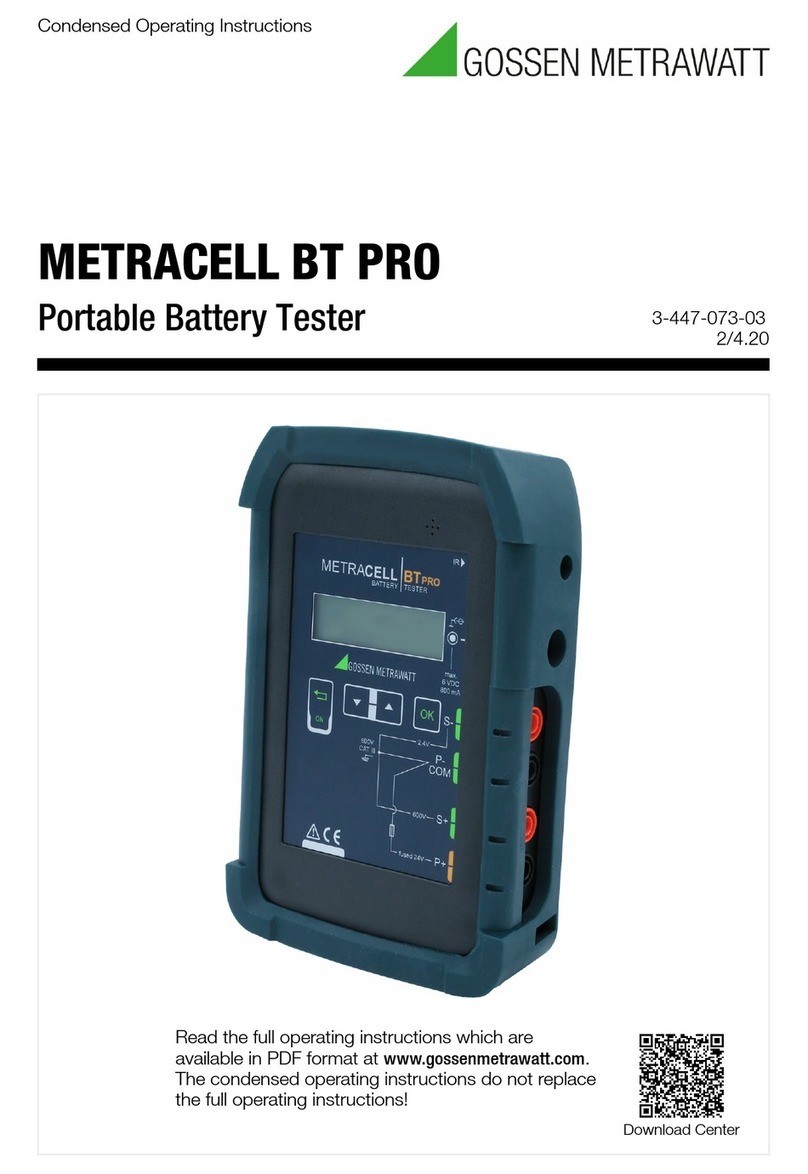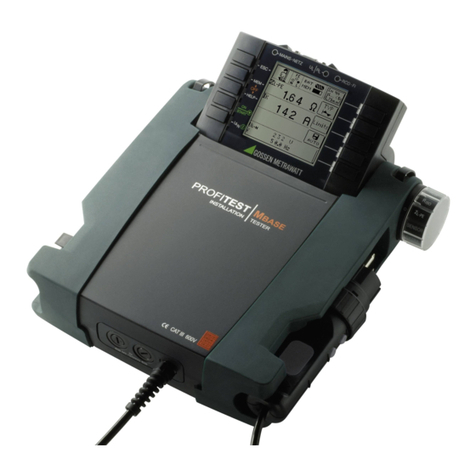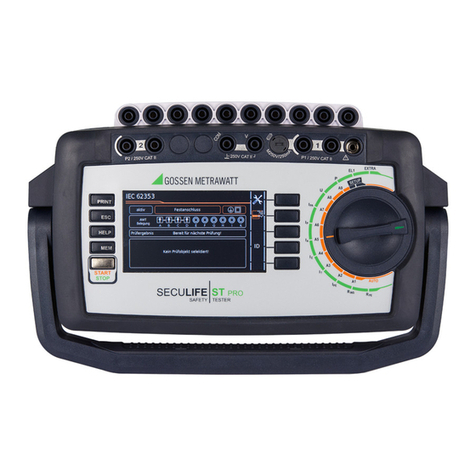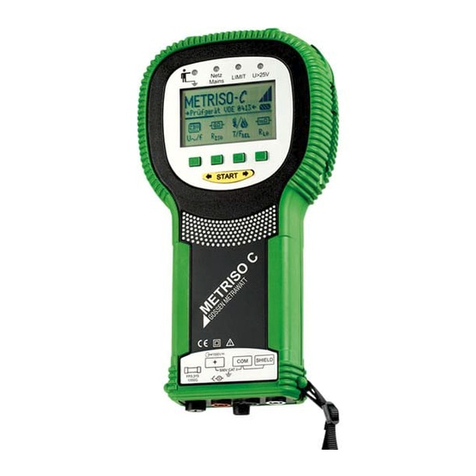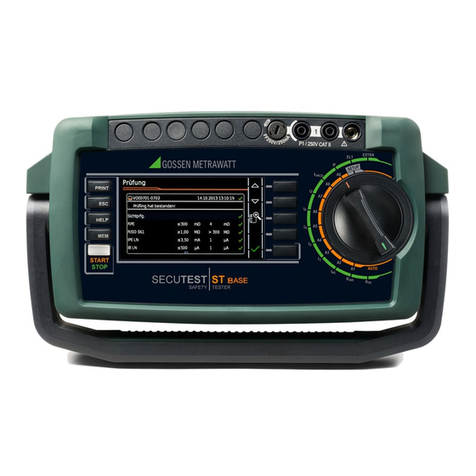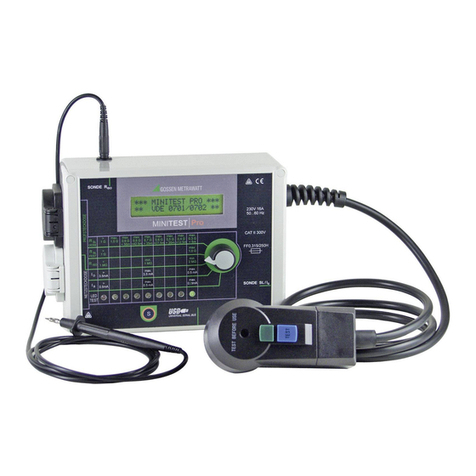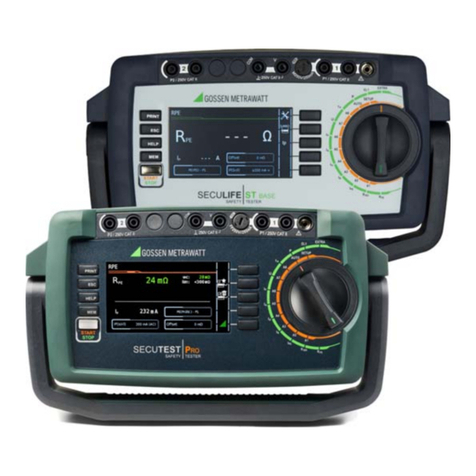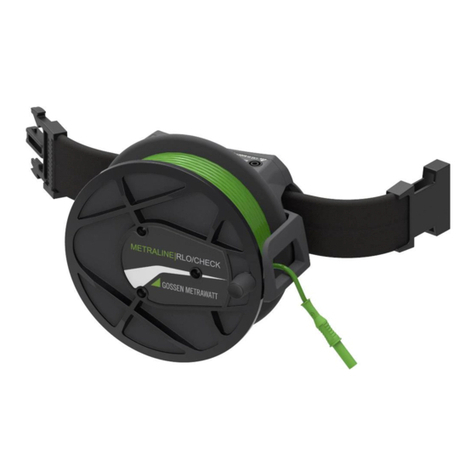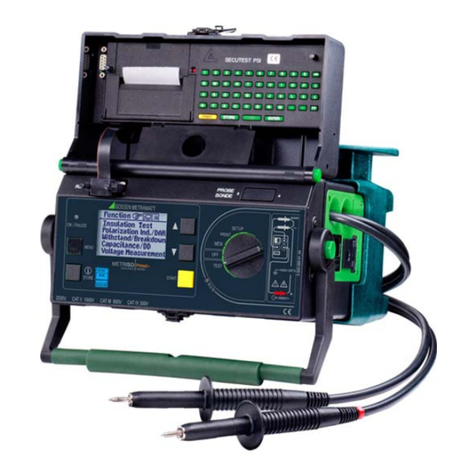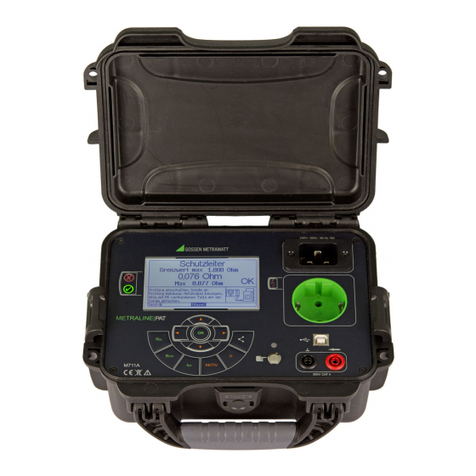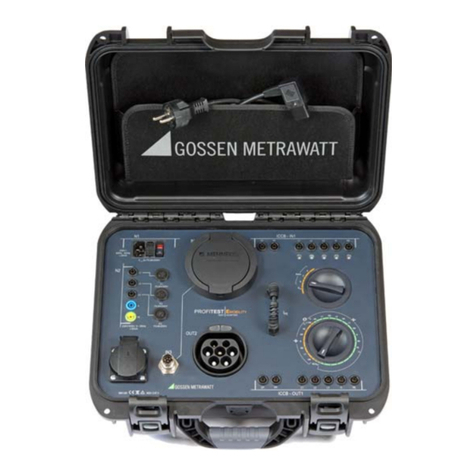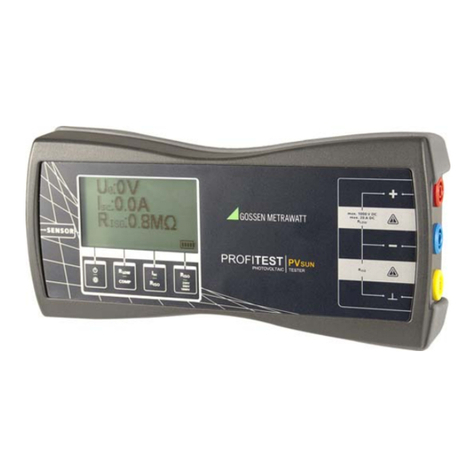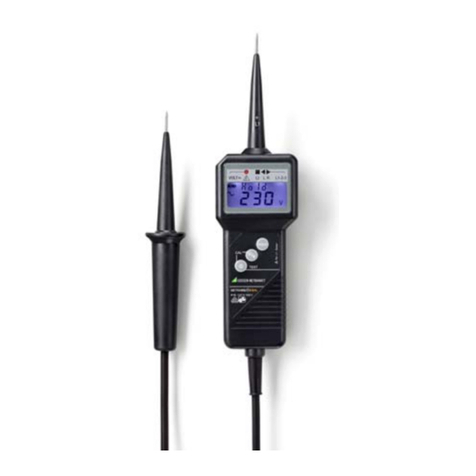
4GMC-I Messtechnik GmbH
Due to the fact that all tests performed with the AT3-
III E must be executed in combination with a
SECUTEST... test instrument, you must also read the
safety precautions and liability limitations included in
the operating instructions for this instrument.
Observe the following safety precautions:
If the red LED (10) remains lit even after
the AT3-III E has been disconnected from
the mains and connected once again, the
safety tester is defective.
If this is the case,
the AT3-III E must be removed from service
and repaired before it is used again.
• In order to assure compliance with technical
safety requirements, the AT3-III E safety
tester should only be repaired by the
manufacturer.
• The AT3-III E must be disconnected from the
mains and from the SECUTEST... test
instrument before it is opened.
Measurements within electrical systems are prohibited!
• The safety tester’s 16 A CEE 3P+N+PE (16)
plug may only be connected to 230/400 V
50 Hz mains power. In order to avoid
undesired shutdown of defective devices
under test, the electrical circuit for the device
under test should be separately fused.
• Before connecting the AT3-III E to the mains,
the SECUTEST... test instrument must first be
connected to the AT3-III E.
Tests during which mains power is
applied may only be selected with the
function selector switch at the
SECUTEST... test instrument after safety
class I devices under test have passed
the protective conductor test.
If the protective conductor is defective
(interruptions / reversed conductors), line
voltage may be present at the housing of
a defective device under test, at the
earthing contacts of the test plugs (4 – 7)
and at the safety socket (15)!
•ForREASONS OF SAFETY, the device under test
must be turned off before switching to
“MAINS” so that dangerous devices under
test (e.g. a circular saw) can only be switched
on intentionally.
• Be prepared for the occurrence of
unexpected voltages at devices under test
(e.g. due to charged capacitors).
• Before connecting the device under test to
the safety tester, subject it to a thorough
VISUAL INSPECTION first. Damaged devices
under test must be repaired prior to testing.
• Only extension cables which have been
plugged into the test outlets (1 – 4) at the
safety tester may be connected to the device
plugs (4 – 7) at the safety tester.
• Due to safety tester design in accordance
with DIN VDE 0404, the “PE” contacts at the
outlets (1 – 4) are only connected to the mains
protective conductor when the SECUTEST...
test instrument has been set for testing with
mains power.
• If the safety tester and/or its connector cables
demonstrate visible damage, no longer
function, have been stored for a lengthy
period of time under unfavorable conditions or
have been subject to excessive stress during
transport, it must be assumed that hazard-
free operation is no longer possible. Remove
the AT3-III E from service and secure it
against inadvertent use in such cases.
Meanings of Symbols on the Instrument
Warning concerning a point of danger
(Attention: observe documentation!)
Indicates EC conformity
This device may not be disposed of
with the trash. Further information
regarding the WEEE mark can be
accessed on the Internet at
www.gossenmetrawatt.com by
entering the search term ’WEEE’.
3 Connecting the Safety Tester to the Mains
The following connections must first be
established before connecting the safety tester to
the mains:
a) Insert the mains plug from the SECUTEST... into
the earthing contact outlet (12) at the AT3-III E.
b) Insert the earthing contact plug (13) from the
AT3-III E into the test socket at the
SECUTEST....
c) In order to measure protective conductor
current, connect the SECUTEST port (14) of
the AT3-III E into sockets 2 and 3 at the
SECUTEST....
d) In order to test extension cables, insert the test
probe at the end of the SECUTEST... probe cable
into the socket (15) at the AT3-III E.
Connect the safety tester to 230/400 V mains
power. The safety tester now performs a self-test.
If the tester is intact, the red LED lights up briefly.
